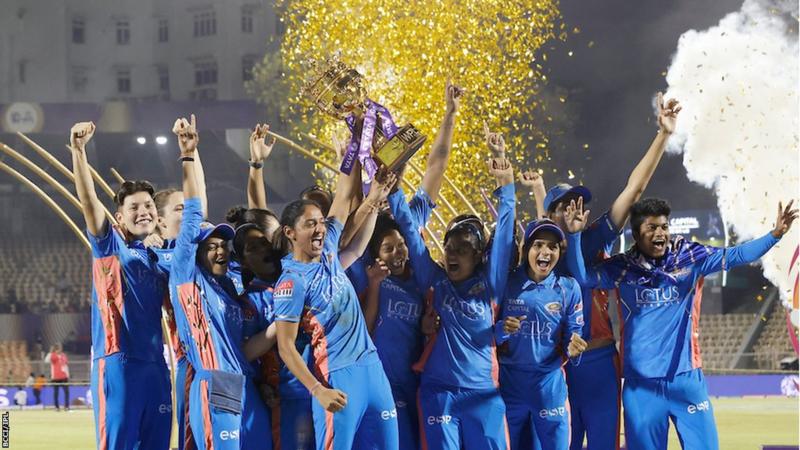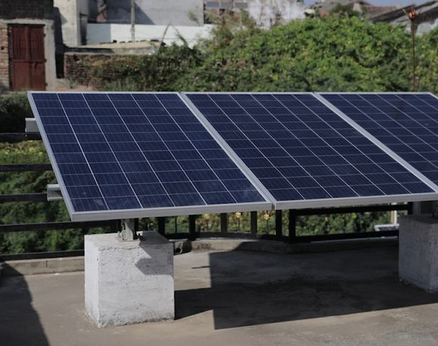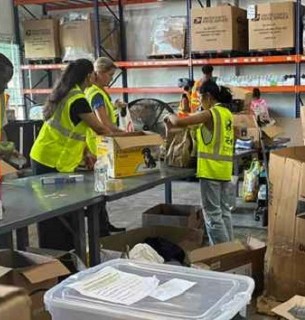When the arrival of the Women's Premier League (WPL) was confirmed in early 2022, it was immediately hailed as a game-changer for women's cricket. It was highly anticipated, a women's edition of the men's Indian Premier League - the world's biggest franchise T20 competition.
The tournament culminated on Sunday with Mumbai Indians beating Delhi Capitals to claim the inaugural title. In the country with the biggest cricketing fanbase in the world, the WPL was always likely to be a hit.
But it became clear this was a tournament like no other when the player auction sent shockwaves through team camps in the middle of the Women's T20 World Cup in South Africa. The money on offer - contracts worth £6m across the five teams - was massive for women's sport and players were catapulted into the public consciousness like never before.
Australia captain Meg Lanning has won it all - numerous T20 World Cups, a 50-over title and the Commonwealth Games. It was no surprise that she was one of the most sought-after players, mainly for her leadership, and Delhi made it to the final with the Australian at the helm.
"It's turned out to be everything I was looking forward to," Lanning said. "The WPL is on another level. It's been a cool experience embracing it all. Hopefully this is just the start and there's bigger and more exciting things to come."
For a player of Lanning's stature to say that speaks volumes. The IPL has grown its fanbases to the point where thousands pack stadiums just for training sessions - and while the WPL still has some way to go to match that, it is off to a strong start.
Naturally, three franchises were helped by being owned by men's IPL teams - Delhi Capitals, Mumbai Indians and Royal Challengers Bangalore - but the stadiums were a sea of colourful team shirts and flags throughout.
When England seamer Issy Wong took her hat-trick in the eliminator against UP Warriorz, the roar of joy had Mumbai coach Charlotte Edwards speechless. "I have never experienced anything like that in my life, the ground just erupted," said the former England captain.
"I try to keep off social media but I saw some clips and to hear the noise was just incredible." Mumbai Indians and Delhi Capitals both dominated the group stages, with Delhi eventually finishing top of the table
Lanning's astute captaincy proved crucial in Delhi's run to the final, while her superb form with the bat saw her finish as the tournament's leading run-scorer. Her opening partnership with Shafali Verma was key, with four 50-plus stands in the group stages, supported by reliability from Jemimah Rodrigues, Alice Capsey and Marizanne Kapp.
Mumbai's strength lay in the relentless consistency of their trio of all-rounders - West Indies' Hayley Matthews, England's Nat Sciver-Brunt and New Zealand's Amelia Kerr. Edwards also got the best out of Wong, who took the chance to raise her game having been overlooked by England for the T20 World Cup, and unearthed uncapped India spinner Saika Ishaque, who was only behind Matthews and England spinner Sophie Ecclestone in the wicket-taking charts.
But while Sciver-Brunt, Lanning and Tahlia McGrath lived up to the hype of their price tags, India star Smriti Mandhana - who earned a tournament-high salary of £340,000 - and her team RCB struggled. It is likely that the tournament will expand beyond five teams in years to come as the player pool grows.
The WPL will be key in testing and improving the depth of India's local talent, but the first year signalled the importance of complementing that with shrewd overseas picks. "We play the game because we love it and we want to carry on growing the game," said Lanning.
"As a big nation in women's cricket we hope we're leaving the game better than when we came." As the WPL grows so will its impact on the global game, which presents challenges for The Hundred in England and Australia's Big Bash League.
The top women's players in The Hundred earn £31,250 - a staggering difference from the WPL salaries, which come from private investment - and 2023 has seen big names including Lanning and Beth Mooney drop out of the 100-ball competition to rest. But Edwards thinks other franchise tournaments could benefit from the WPL, which she says will improve players.
"The WPL has really captured fans around the world, not just India," she said. "It's only going to get bigger and better, and we will see that in The Hundred and the WBBL as well because you just sense that people are loving it women's cricket everywhere.
"For the players to experience playing under this level of pressure in front of big crowds and with big expectations, they will be better equipped going forward." Current England head coach Jon Lewis led UP Warriorz in the WPL, describing his recent experiences as like "speed dating in women's cricket".
But he also believes franchise tournaments will play a positive role in the game's development. "The gap between regional cricket, The Hundred and international cricket is quite stark and some of the girls get a bit of a shock, which is the issue in women's cricket worldwide," said Lewis.
"This is going to be a catalyst for growth we haven't seen in the women's game."











